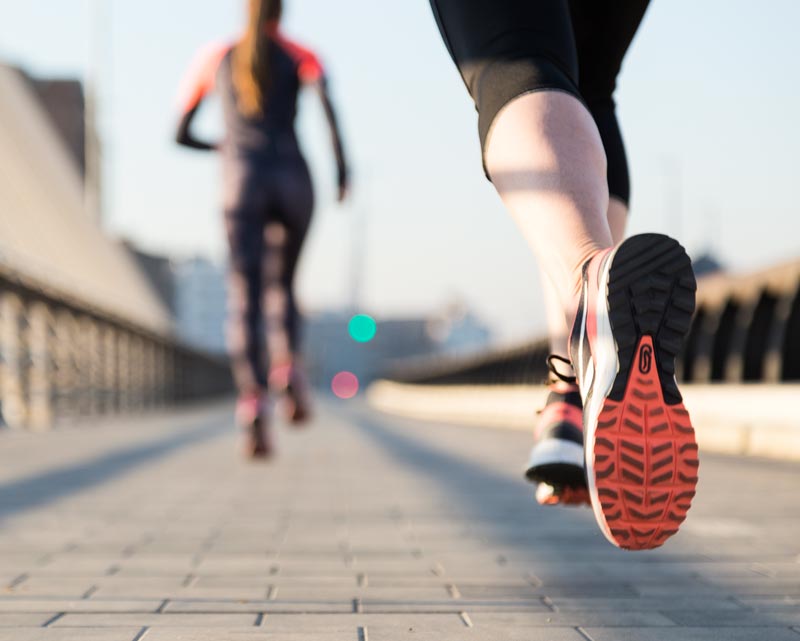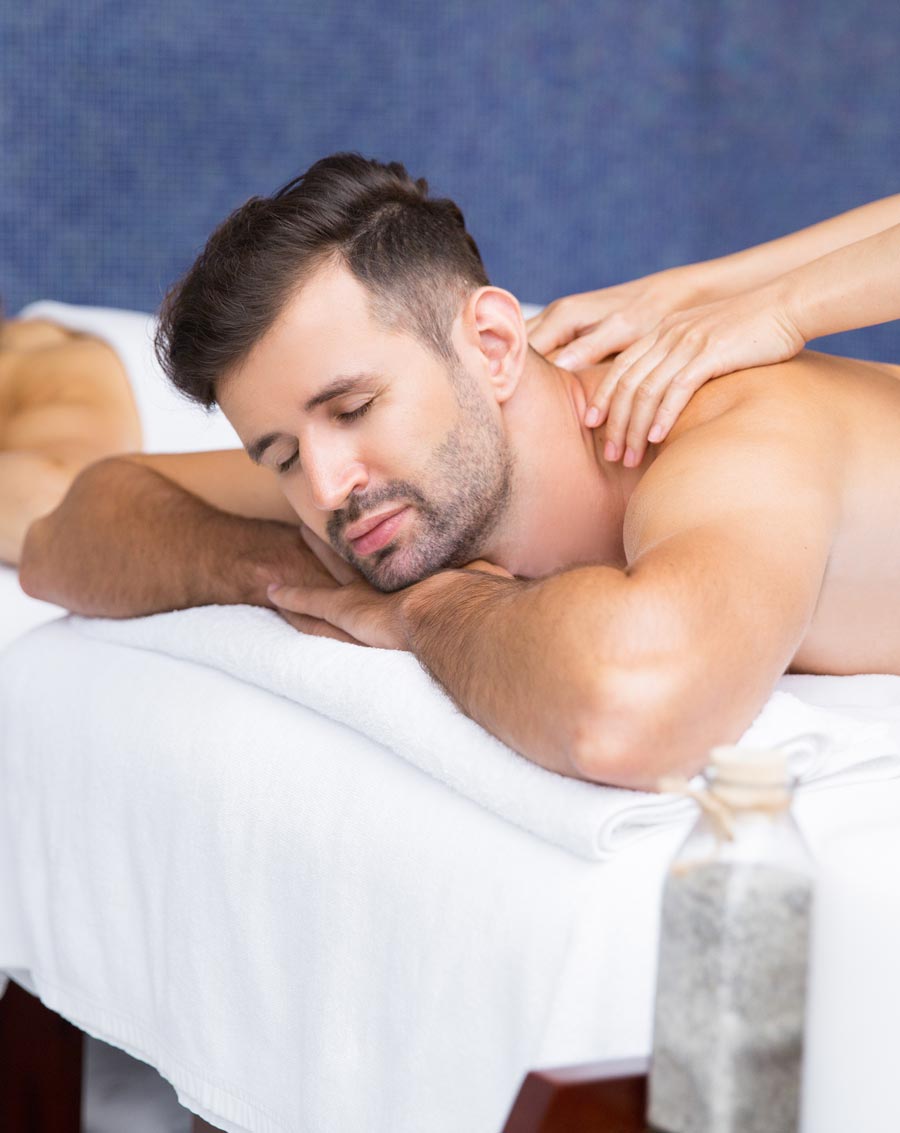Sports Therapy
What is sports Therapy?
Sports therapy is used for the treatment of pain, injury and dysfunction of the musculoskeletal system arising from recreational and competitive sports, as well as the demands of work and postural stress.
Sports therapist uses a variety of soft tissue and joint mobilisation techniques, including myofascial release, trigger point therapy, myofascial dry needling, and relaxation massage to ease daily stress levels. The treatment focuses on repairing the body physically and emotionally in order to achieve balance. It creates an optimum healing environment within the body; resulting in it becoming pain free and working at its peak performance.
It is also important, that whilst providing a high level of care, the sports therapist educates you on how to manage your injuries, aches and pains to prevent them from reoccurring.

Sports pain and injuries
Are you recovering from a sports injury?
Muscle aches
Joint pain and stiffness
Recovery and performance

Benefits
Sports and exercise therapy come with many benefits; expect to feel free, be able to move and perform better as a results of trying sports and exercise therapy. By a routine of assessments, body alignments, posture analysis and an overall idea of your daily living style, we can achieve so much! Working together to understand your body, we can optimize your body functions, allowing you to exercise and let your body recover.
Cryotherapy
Regular cryotherapy treatment has been reported to reduce inflammation and injury swelling, relieve muscle pain (natural analgesia), enhance recovery times and increase overall energy. When exposed to extremely cold temperatures, an emergency response is triggered within the body. This response limits blood flow to the core and releases a cocktail of hormones, including adrenaline and endorphins.

Contraindications
Sports therapy may not be safe for people with
- Fever: With fever your body is trying to isolate and expel an invader of some kind. Massage increases overall circulation and could therefore work against your body’s natural defenses.
- Open wounds: Any cuts, lacerations or grazes. Obvious really, but it has to be said. You should wait until the scar has properly formed.
- Muscle Ruptures: In the acute stage these may still be bleeding. Massage will increase bleeding and tissue damage and prolong recovery. After the initial 48 to 72 hours massage may be possible but it will depend on the extent of the injury.
- Burns, Chilblains and Broken bones: Massaging all of these will hurt and cause more damage.
- Periostitis: This is inflammation of the sheath that surrounds the bone. Massage directly to the bone may cause irritation.
- Bursitis: Inflammation to a bursa. A bursa is a small sack of fluid that helps tendons pass over bones at joints. If there is pain, swelling and redness over the skin then massage should be avoided.
- Myositis ossificans: A bad contusion or muscle rupture may begin to calcify (grow bone). Massage will make the damage worse.
- Cancer: Cancer can spread through the lymphatic system, and because massage increases lymphatic circulation, it may potentially spread the disease as well. Simple, caring touch is fine, but massage strokes that stimulate circulation are not. Always check with a doctor first.
- Infections of the skin and soft tissue: Bacterial infections, viral infections and fungal infections can be spread to other areas of the body by the therapist. Pain may also result from the infection, not an injury so massage will not help.
- Pregnancy: Massage is contraindicated only in the first trimester of pregnancy as the baby is not stable yet and massage can have unexpected effects.

Sports therapy FAQ’s
We will discuss about your sporting history and any injuries. Following that, there will be a physical examination of the injured area including range of movement and strength. A session of hands on treatment will follow, and to conclude, exercise prescription of remedial exercises along with advice to have follow-up sessions, should you need more.
Anyone who has pain that is related to poor muscular/joint movement or strength and specifically competitive and recreational athletes who have noticed persistent niggles that never seem to come right. It could also be that your physical performance reached a plateau and you feel to have lost power in your serve or stroke or you find yourself considering giving up your sport because you are too sore after competing. Perhaps there is underlying physical reason and a sports therapist could help.
Your massage therapist may require you to fill out a health history form. Afterward the therapist will begin by asking you general questions to establish what areas you would like worked on, if there are any conditions needing to be addressed, and to determine if massage is appropriate for you. Your massage therapist may perform certain assessments and tests to evaluate your condition and to see if you have any presenting complaints.
It is important to list all health concerns and medications so the therapist can adapt the session to your specific needs without doing any harm. It is also important to list any allergies so the therapist is aware if he/she needs to use a different oil or lotion during the session.
You should undress to the level you are comfortable. For a full body massage, most get completely undressed. However, if you will be more comfortable during the session if you leave your underwear on, that’s fine. The therapist will work around the clothes you left on as best as he/she can. If removing all your clothes makes you too nervous and unable to relax, then you may not get the optimal benefit from the session. Regardless, you will always be covered with a towel and your therapist will work around you. Your massage therapist should give you privacy to undressed and get comfortable on the table.
Some is better than none. What does that mean? Well, it varies from person to person. If you are just looking for some occasional relaxation, then a session every 3-6 weeks may be fine for you. However, if you are looking to address a specific condition, then it is recommended to go more frequently at first and then slowly taper down to a maintenance schedule. Sometimes more frequent 30-minute sessions can be effective until your goals are met and a maintenance schedule is in place.
Frequency of sessions should be discussed with your massage therapist after your treatment when he/she has a better hands-on understanding of your particular muscular issues.
Every person is unique and every condition is unique to each person. It may take one session or it may take several. You and your therapist will be able to talk more specifically about this after your first session and he/she has had a chance to evaluate your body’s tissues.
The average full-body massage treatment lasts approximately one hour. A half-hour appointment only allows time for a partial massage session, such as neck and shoulders, back or legs and feet. Many people prefer a 60 to 90-minute session for optimal relaxation. Always allow relaxation time prior to and after the session.
Book your consultation
or Call 0121 608 5213

SIGN UP FOR
NEWS & OFFERS
VIP MEMBERS
BECOME A VIP MEMBER AND SAVE £’s ON TREATMENTS AND PRODUCTS

Safety List
- We do not proceed with treatment until you are fully informed
- All clinics are licensed, insured & regulated
- We only recruit pactitioners with over 3 years industry experience
- FDA approved machines, cutting edge technology
Testimonials




